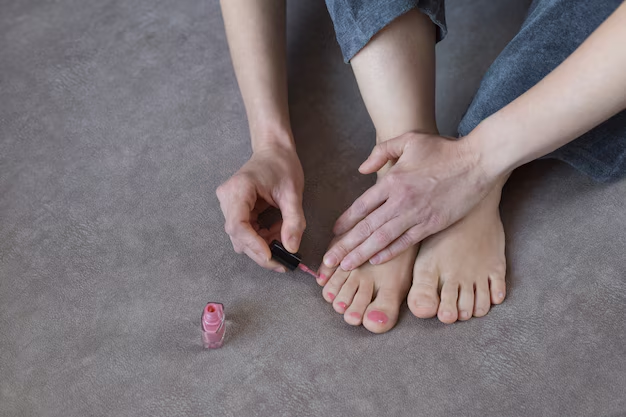Understanding Diabetes and Its Impact on Your Feet
Diabetes is a complex condition that can affect various parts of the body, but one area that often gets overlooked is the feet. More than just a means of getting from point A to point B, your feet can be significantly affected by diabetes, leading to serious complications if not managed properly.
The Connection Between Diabetes and Foot Health
Diabetes complications related to the feet primarily arise due to two conditions: neuropathy and poor circulation. Let's break them down:
Neuropathy: This condition, known as diabetic neuropathy, involves nerve damage primarily affecting the legs and feet. High blood sugar levels can damage the nerves, leading to a loss of sensation. This loss means cuts, blisters, or ulcers can go unnoticed and untreated, potentially leading to infections.
Poor Circulation: Diabetes can cause blood vessels to narrow and harden, reducing blood flow to the feet. Poor circulation makes it more difficult for wounds to heal, increasing the risk of infections and, in severe cases, leading to amputations.
Common Foot Problems Caused by Diabetes
Diabetes can lead to several specific foot problems, including:
- Ulcers: Open sores or wounds that do not heal.
- Calluses and Corns: Build-up of hard skin caused by uneven pressure.
- Fungal Infections: Like Athlete’s foot and fungal nails.
- Amputation: In severe cases, untreated infections can lead to the need for amputation.
Prevention and Management Tips
Managing foot health with diabetes involves regular care, including:
- Daily Checks: Inspect your feet daily for any cuts, blisters, or changes in skin color or texture.
- Proper Footwear: Wear shoes that are comfortable and fit well to prevent blisters and sores.
- Regular Podiatrist Visits: Professional check-ups can help catch any issues early.
- Blood Sugar Management: Keeping your blood glucose levels in check is crucial for reducing complications.
Financial Support and Resources
Foot-related complications from diabetes can be costly, but there are resources and assistance programs available to help manage both medical and financial burdens.
- Government Aid Programs: Many countries offer support through national health services that cover some diabetes-related medical expenses. Check with local services to see what’s available.
- Financial Assistance for Medical Supplies: Some nonprofit organizations provide financial assistance for diabetic supplies like glucose monitors and medications.
- Credit Card Solutions: Certain credit card companies offer flexible payments or medical expense funding options tailored for healthcare costs.
- Educational Grants: Community programs often offer educational resources and workshops on managing diabetes effectively, which can be attended at little or no cost.
🔍 Resources at a Glance:
- 🏥 Healthcare Programs: Government aid and health insurance can alleviate medical costs.
- 💳 Flexible Credit Options: Credit solutions that focus on medical expenses.
- 💸 Nonprofit Assistance: Financial aid for diabetic supplies is available through nonprofit organizations.
- 📚 Educational Opportunities: Free workshops and grants on diabetes management skills.
By understanding how diabetes affects the feet and utilizing available resources, individuals can better manage their condition and prevent serious complications. Awareness and proactive care are key steps toward maintaining overall health and financial stability.
